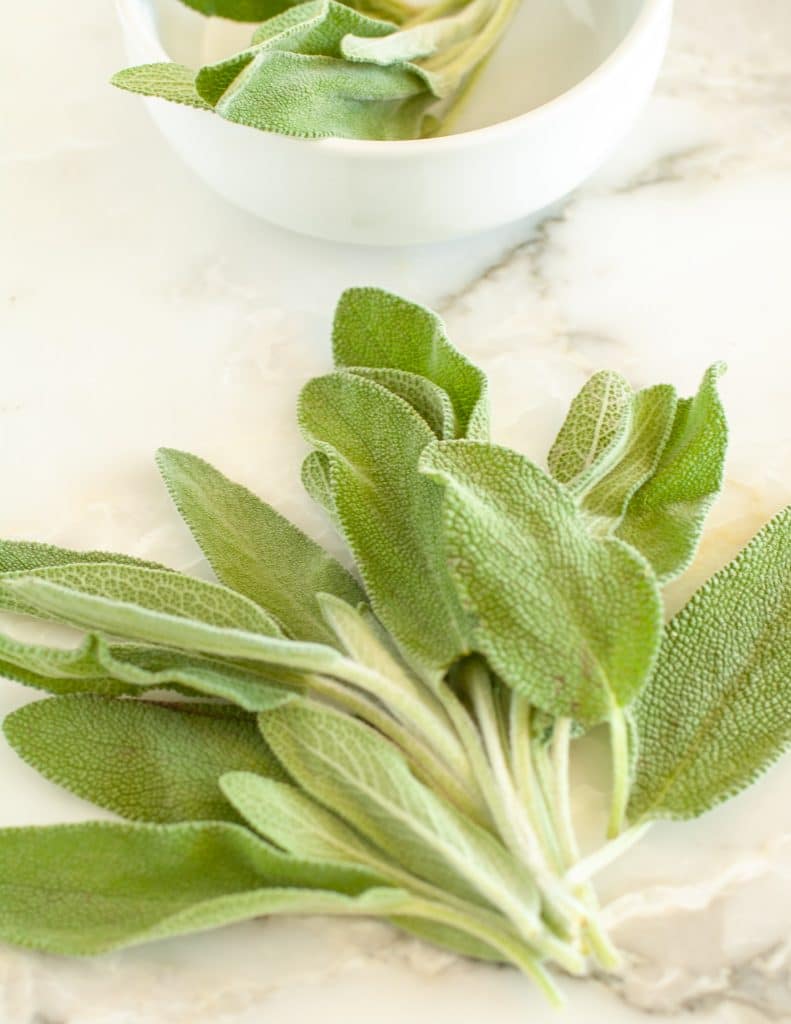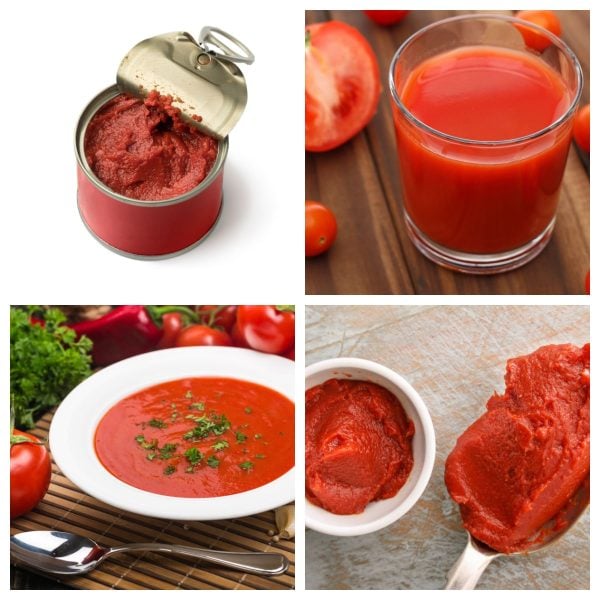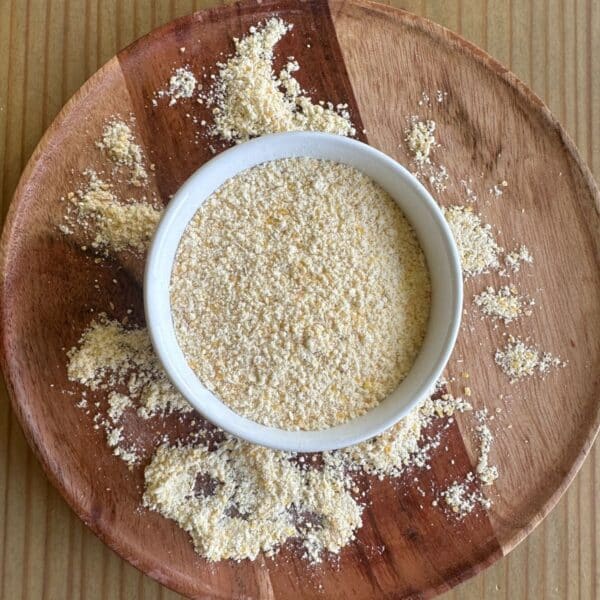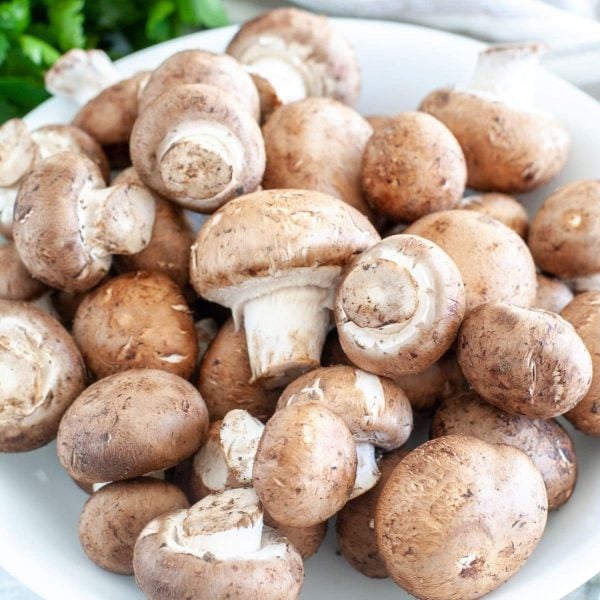The Best Sage Substitutes
Jun 27, 2021, Updated Oct 11, 2024
This post may contain affiliate links. Please read our disclosure policy.

Sage is a leafy green herb that originates from the mint family. It is often used for cooking to add woodsy and slightly bitter undertones to any dish. The herb is most often used in holiday recipes but can be used in many recipes any time of the year.
Not only is sage a great herb to use in cooking, but it also has many medicinal properties to help improve digestion and lower “bad” cholesterol. This is why this herb pairs well with high fatty foods, such as pork and turkey. Perhaps this is the reason that sage can be found in so many holiday cuisines. If there is no sage available, there are quite a few herbs and seasonings that make great substitutes in recipes.
Rosemary
Rosemary works as a great substitute for sage in cooking since they have similar pine and woodsy undertones. Rosemary also boasts more of a balsamic and peppery taste in comparison to sage. This herb is a bit more potent, so it is best to use a 1 teaspoon of Rosemary to a 1 tablespoon of sage ratio in any recipe.
Unlike sage, Rosemary is harvested all year round and can easily be found in stores. You can either buy the sprigs fresh or dried, though the fresh leaves give the lightest and purest flavor. The dried sprigs give a spicier flavor, so when utilizing dried rosemary, it is best to use a fraction of the amount.
Marjoram
Marjoram is part of the same mint family as sage and mimics its flavor and aroma. Marjoram is more citrusy, yet milder in comparison to its counterpart. You may use the same measurements when cooking with marjoram as you would with sage since the herbs are both equally aromatic.
However, since this herb is milder, it does not retain its flavor as long when cooked. When utilizing marjoram, it is better to add it towards the end of cooking or as a garnish to the dish.
Thyme
Thyme has a very similar flavor profile to sage since they are both from the mint family. Thyme adds a bit more of a citrusy and peppery undertone than sage does, but it still works as a great substitute. This herb is great for cooking since it can retain its flavor in long cooking times.
It retains its flavors when used in a braise or when cooking in the oven. When substituting thyme for sage, you may use the same measurements since thyme has a similar flavor profile.
For a flavor that is closest to sage, it is best to utilize fresh thyme leaves. If all that you have is dried thyme, it is best to reduce it to a teaspoon if the recipe calls for a tablespoon of sage.
Poultry Seasoning
Poultry seasoning is a dry blend of thyme, sage, rosemary, marjoram, nutmeg, and black pepper. Since sage is the main ingredient in this seasoning blend, it works well as a substitute. Poultry seasoning pairs well with dishes that can be heavily seasoned, such as chicken, turkey, or fish. You can use the same measurements for this seasoning as you would with sage.
The dried blend in poultry seasoning makes the flavor deeper and spicier. When it comes to more delicate dishes that do not need strong flavors, it is best to use a fraction of the amount.
Savory
There are many varieties of the savory herb, but summer and winter savory are the most common for cooking. These are great substitutes for sage when it comes to making a savory dish that utilizes sage.
Summer Savory
Summer savory is popular for its sweet yet bitter, minty, peppery taste and aroma. It’s a bit milder in comparison to its counterpart, Winter savory. Summer savory is more popular than Winter savory. Due to its more subdued flavor, you may use the same measurement of Summer savory as you would with sage.
Winter Savory
Winter savory has an earthy and bitter flavor, similar to sage. However, winter savory is much stronger in comparison to sage. When utilizing this spice, it is best to use half the measurement as you would use with sage.
Oregano
Oregano’s flavor profile is similar to sage; they both have an earthy and bitter flavor. Thanks to their origination from the mint family, oregano is a great substitute for sage. Oregano also gives hints of a sweet and peppery taste. This spice also withstands its aroma and flavor when cooked for a longer period of time.
You can find this herb in its fresh leafy form, or in a dried seasoning. When Oregano is fresh, it has a much more potent flavor, which is a great substitute for sage when it comes to savory dishes. Just be sure to remove the fresh leaves before serving so you don’t get a bitter bite mixed in with your dish!
Basil
Just like sage, basil also originates from the mint family. It has a similar bitter flavor to sage, yet offers a peppery, lemony, anise-like, and somewhat sweet flavor profile.
Basil can often be found in stores all year round either fresh or dried. If you would like a more potent flavor, it is best to buy dried basil. Fresh basil offers a more mild taste that pairs well with tomatoes in salads or even on pizzas.
Mint
Since sage originates from the mint family, mint is definitely a viable option for substitution. Their flavor profiles have some similarities as well as some dissimilarities, but mint can still be used in a pinch.
Mint has a much stronger, peppery, and sweet flavor in comparison to sage. For this reason, it is best to cut the amount of mint in half from the original measurement of sage. The fresh leaves have the most potent flavor and aroma, so you can cut back on the striking taste by using dried leaves.
Sage Essential Oil
Sage essential oil is much more potent than its fresh or dried leaves, but can still be used as a substitute in cooking. Essential oils are edible, but should only be used in small amounts due to their very concentrated flavor.
When using sage essential oils, be aware that a little goes a long way. A drop or two of the oil can be a great substitution for a recipe that utilizes the flavor profile of sage.
More Substitutions
Looking for other substitutions? There are substitutions for many ingredients like cornmeal, mushrooms and ground mustard.












